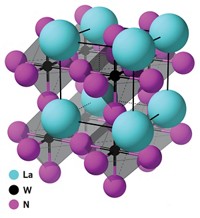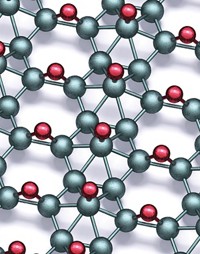Advertisement
Grab your lab coat. Let's get started
Welcome!
Welcome!
Create an account below to get 6 C&EN articles per month, receive newsletters and more - all free.
It seems this is your first time logging in online. Please enter the following information to continue.
As an ACS member you automatically get access to this site. All we need is few more details to create your reading experience.
Not you? Sign in with a different account.
Not you? Sign in with a different account.
ERROR 1
ERROR 1
ERROR 2
ERROR 2
ERROR 2
ERROR 2
ERROR 2
Password and Confirm password must match.
If you have an ACS member number, please enter it here so we can link this account to your membership. (optional)
ERROR 2
ACS values your privacy. By submitting your information, you are gaining access to C&EN and subscribing to our weekly newsletter. We use the information you provide to make your reading experience better, and we will never sell your data to third party members.
Materials
Patterning Magnetic Graphene With An E-Beam
Selectively removing hydrogen from partially hydrogenated graphene yields nanoscale patterns useful for microelectronics
by Mitch Jacoby
February 9, 2015
| A version of this story appeared in
Volume 93, Issue 6
When it comes to graphene’s properties, the electronic, mechanical, and thermal ones tend to get most of the attention. Researchers devote relatively little effort to exploring its magnetic properties. Yet magnetic forms of graphene, which can be made by hydrogenating the ultrathin carbon material, could be useful for boosting data storage and data transfer technology and for applications in spintronics (spin-based electronics). But those applications would require gentle hydrogenation methods—common ones induce defects in graphene and degrade its properties—and suitable procedures for forming microscopic magnetic patterns. Those applications are now closer at hand as a result of a study led by Woo-Kyung Lee and Paul E. Sheehan of the Naval Research Laboratory, in Washington, D.C. (Adv. Mater. 2015, DOI: 10.1002/adma.201404144). The team hydrogenated graphene by treating it with a solution of ammonia and lithium followed by exposure to ethanol. Then they formed nanoscale patterns by selectively removing hydrogen with an electron beam. Magnetic force microscopy analysis confirms that unlike pristine graphene regions (shown, light background), lightly hydrogenated ones are magnetic (dark squares), and the strength of the magnetism can be tuned by controlling the electron beam intensity.





Join the conversation
Contact the reporter
Submit a Letter to the Editor for publication
Engage with us on Twitter